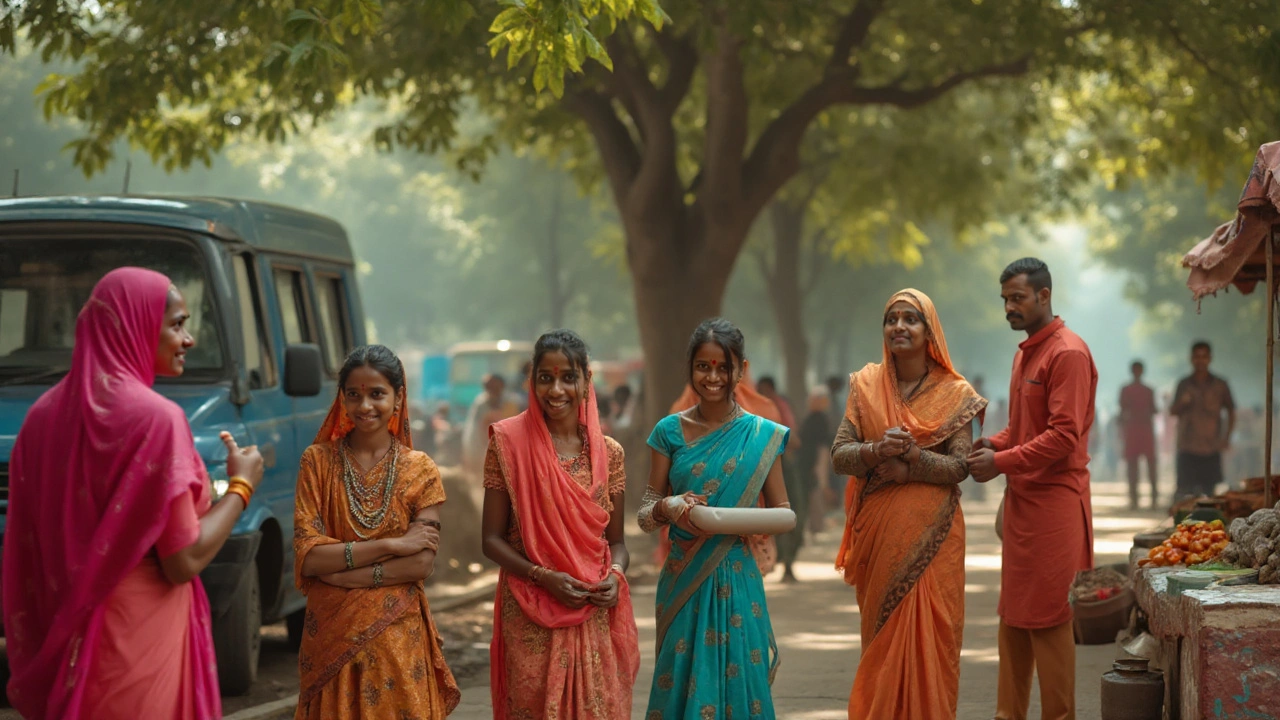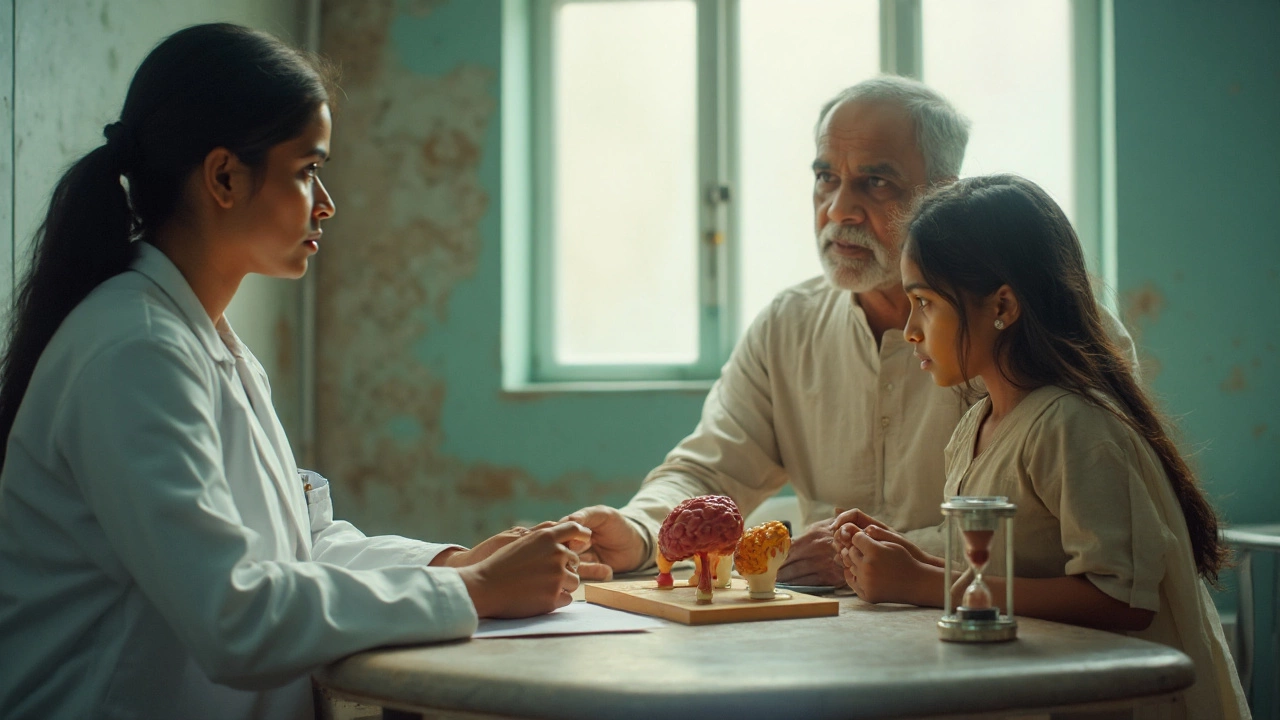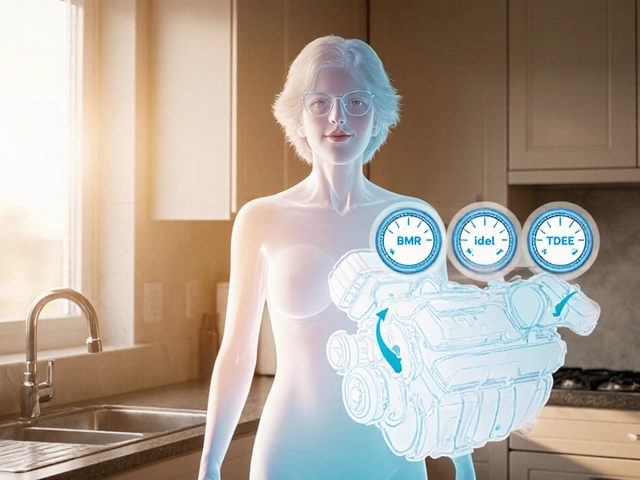incurable cancer isn’t a single diagnosis. It’s a moving target shaped by cancer type, stage, biology, and how early it’s found. Some cancers remain very hard to cure today, especially once they’ve spread. Others, caught early or treated with the right precision therapy, are highly curable. The real question isn’t “Which cancer has no cure?” but “Which cancers have very low cure rates right now-and what can tilt the odds?”
Incurable cancer is a practical label people use when the chance of permanent eradication is extremely low with current therapies, often because the disease is advanced, resistant, or biologically aggressive. It does not mean treatment is pointless; many “incurable” cancers are controllable for years.
TL;DR
- No single cancer is always incurable. “Cure” depends on stage, biology, and response to therapy.
- Cancers with very low cure rates today include pancreatic ductal adenocarcinoma, glioblastoma, small-cell lung cancer, cholangiocarcinoma, and mesothelioma-especially when metastatic.
- “Cure” vs “remission”: remission means no signs now; cure means the cancer is very unlikely to return later.
- Breakthroughs in 2025: immunotherapy combinations, KRAS-targeted drugs, tumor treating fields, and earlier detection are shifting outcomes.
- Action beats fear: confirm stage, get a second opinion, explore trials, and start supportive care early to live better and longer.
What “cure” really means in cancer care
Oncologists rarely promise a cure because biology doesn’t do guarantees. Instead, they look at probabilities over time: if the risk of the cancer ever coming back becomes tiny after years of follow-up, they might say “functionally cured.” When a scan shows no detectable cancer right now, that’s remission. These words matter because they shape decisions, expectations, and mental bandwidth.
Metastatic cancer is cancer that has spread from the original site to distant organs. Metastasis is the main reason many cancers are hard to cure; the disease becomes diffuse, genetically diverse, and harder to eradicate completely.
Survival numbers you read online are population averages from registries like the U.S. SEER (National Cancer Institute) and global datasets from WHO/Globocan. They lag by a few years and don’t reflect individual biology (genes, immune system, overall health) or new therapies that arrived last month. Use them for context-not destiny.
The cancers we still struggle to cure (and why)
Some solid tumors remain stubborn even with aggressive therapy. Most of the struggle comes down to late detection, rapid spread, and therapy resistance. Here are the toughest ones in 2025, with what the data and clinics actually show.
Pancreatic ductal adenocarcinoma (PDAC) is the most common pancreatic cancer. It often hides until it has spread. In recent SEER-era data, overall 5-year relative survival is around 12%; if caught localized, it can reach ~44%, but once distant, it drops to ~3%.
Why hard to cure: deep location, few early symptoms, early micro-metastases, and a dense tumor stroma that blocks drugs. What’s improving: better imaging, borderline-resectable surgery after chemo, and KRAS-directed therapies for select mutations.
Glioblastoma (GBM) is an aggressive primary brain tumor. Standard care (surgery + radiation + temozolomide) yields median survival around 12-15 months; 5-year survival stays in the single digits (~6-7%).
Why hard to cure: the blood-brain barrier limits drugs, tumor cells infiltrate normal brain tissue, and resistance evolves quickly. What’s improving: tumor treating fields (wearable electric fields), targeted trials for IDH, EGFR, MGMT methylation subgroups, and vaccine approaches-incremental, but real.
Small-cell lung cancer (SCLC) is a fast-growing lung cancer strongly linked to tobacco. It responds fast to chemo, then relapses fast. Overall 5-year survival is typically under 10%; extensive-stage disease often sits around 3-5%.
Why hard to cure: explosive growth, early spread, and rapid resistance. What’s improving: immunotherapy (atezolizumab or durvalumab) added to chemo nudges survival up; maintenance strategies and DLL3-targeting drugs are in trials.
Cholangiocarcinoma (bile duct cancer) often presents late with jaundice. Five-year survival varies by location and stage, but advanced disease remains poor; some series report under 10-15% for metastatic cases.
Why hard to cure: tricky anatomy, late detection, and limited systemic options historically. What’s improving: targeted drugs for FGFR2 fusions and IDH1 mutations, plus immunotherapy in mismatch repair-deficient tumors.
Malignant pleural mesothelioma is an asbestos-related cancer of the pleura. Five-year survival is roughly 10-12%, with median survival commonly 12-18 months depending on subtype and treatment.
Why hard to cure: diffuses across the pleura instead of forming a neat lump, making full surgical clearance rare. What’s improving: immunotherapy (nivolumab/ipilimumab) and refined multimodality surgery in select patients.
There are also hard-to-cure subgroups inside cancers that can otherwise be curable when found early. Advanced high-grade serous ovarian cancer, for example, often recurs after initial response; stage IV five-year survival hovers around the mid-teens. Triple-negative breast cancer is aggressive when metastatic, yet early-stage cases now sometimes hit pathologic complete response rates above 60% with modern chemo + immunotherapy. Context is everything.
Quick comparison: where cure is rare vs occasionally possible
| Cancer type | Typical stage at diagnosis | 5-year survival (overall) | When cure is realistic | Key advances |
|---|---|---|---|---|
| Pancreatic ductal adenocarcinoma | Locally advanced or metastatic | ~12% | Early, resectable cases after neoadjuvant therapy | KRAS targeting (subset), better surgery, adjuvant chemo |
| Glioblastoma | Localized but infiltrative | ~6-7% | Rare long-term remissions; mostly disease control | Tumor treating fields; molecularly guided trials |
| Small-cell lung cancer | Often extensive-stage | <10% | Limited-stage with concurrent chemoradiation | Chemo-immunotherapy; prophylactic cranial irradiation in select |
| Cholangiocarcinoma | Often advanced | Variable, poor when metastatic | Early, surgically resectable with clear margins | FGFR2/IDH1 targeted therapies; immunotherapy in dMMR |
| Malignant pleural mesothelioma | Locally advanced | ~10-12% | Highly selected cases with multimodality therapy | Nivolumab/ipilimumab; improved surgical selection |
| Ovarian (high-grade serous) | Often stage III-IV | ~50% overall; stage IV ~17% | Debulking surgery + chemo; PARP inhibitors in BRCA/HRD | PARP inhibitors; maintenance regimens; better imaging |
Why cure is elusive: five biological roadblocks
- Late detection: PDAC and cholangiocarcinoma often announce themselves after spread. No effective population screening exists yet.
- Hidden micrometastases: Even “localized” tumors sometimes seed distant cells too small to see on scans.
- Drug resistance: Tumors evolve under treatment pressure; subclones learn to bypass targeted drugs.
- Immune evasion: Some cancers switch off immune alarms, making them less responsive to checkpoint inhibitors.
- Physical barriers: The brain’s blood-brain barrier and dense pancreatic stroma physically limit drug penetration.
What’s changing in 2025: progress you can actually feel
We’re not stuck. The last five years brought genuine, patient-level gains-small in some cancers, but real.
Immunotherapy uses the immune system to recognize and kill cancer cells. Checkpoint inhibitors (like PD-1/PD-L1 blockers) are now standard in several cancers and have turned certain stage IV diagnoses into long-term disease for a subset.
- KRAS targeting: Drugs against KRAS G12C (and other KRAS variants in trials) are opening doors in PDAC subsets that once had no targeted options.
- GBM: Tumor treating fields and better molecular profiling help tailor therapy; survival gains are incremental but noticeable in real-world registries.
- SCLC: Adding immunotherapy to first-line chemo extends survival by months for many; second-line options are broadening.
- Ovarian: PARP inhibitors for BRCA/HRD-positive disease are extending remission spans; some patients enjoy years off therapy.
- Cholangiocarcinoma: FGFR2 and IDH1 inhibitors have created islands of control where none existed; genetic testing is now table stakes.
- Beyond: CAR-T cell therapy dominates blood cancers and is inching into solid tumors via trials; bispecific antibodies are accelerating.
Regulatory agencies like the U.S. FDA and EMA keep approving niche, biomarker-driven drugs. The flip side? You need genomic testing to find your niche. If your oncologist hasn’t ordered comprehensive tumor profiling for an advanced solid tumor, ask about it.

Prevention and early catch: the quiet superpowers
When people ask about “incurable cancer,” the most honest path to cure is often not a better drug-it’s prevention and early detection.
- Vaccination: HPV vaccination can prevent most cervical cancers and some throat/anal cancers. Hepatitis B vaccination cuts the risk of liver cancer.
- Screening: Colonoscopy finds and removes precancerous polyps. Low-dose CT scans cut lung cancer mortality in high-risk smokers. Mammography catches early breast cancer.
- Lifestyle: Quitting tobacco is still the fastest way to slash risk of lung, oral, and bladder cancers.
- Genetic risk: BRCA1/2 and Lynch syndrome testing guide surveillance or preventive surgery that can be literally lifesaving.
- Pancreas watch: People with strong family history or known germline risks may be offered MRI/EUS surveillance in specialized programs.
How to read survival rates without losing hope
Numbers guide policy; people guide choices. Keep these filters on:
- Stage matters more than type. Stage I colon cancer is often curable; stage IV usually isn’t-same disease, different odds.
- Biomarkers trump averages. A lung cancer with an ALK fusion can behave very differently than one without.
- Conditional survival improves over time: if you’re alive two years after diagnosis, your next three-year odds are usually better than at day one.
- Registries lag behind reality. A 2025 approval won’t show up in 2018-2020 survival curves yet.
Practical playbook if you hear “not curable”
- Confirm the exact subtype and stage. Get the pathology report, staging scans, and biomarker panel.
- Ask for a tumor board review. Many centers discuss tough cases in a multidisciplinary meeting.
- Seek a second opinion. Prefer a high-volume cancer center or an academic unit that runs trials.
- Explore clinical trials early. Trials aren’t “last resort”-they’re often the most modern option.
- Start supportive care now. Palliative care boosts symptom control and can extend life; it’s not the same as hospice.
- Plan finances. Ask about generic options, assistance programs, and insurance coverage boundaries.
- Track what matters to you. Pain, energy, appetite, breath-tell your team; dosing and drugs can be adjusted.
Related concepts you might want next
- Cancer biology basics: how mutations drive growth and resistance.
- Targeted therapy vs chemotherapy: when to expect durable control.
- Immunotherapy side effects and how they’re managed safely.
- Genomic testing: what a panel report means for real treatment choices.
- Palliative care and quality-of-life metrics during cancer treatment.
Credible data sources used by clinicians
When doctors quote numbers, they’re usually drawing on the National Cancer Institute’s SEER program, WHO/Globocan estimates, and guidelines from bodies like NCCN and ESMO. Local registries (for example, ICMR/NCDIR in India) add country-specific context. These sources evolve, so a 2020 figure may already be outdated if a 2024-2025 therapy changed the game.
Frequently Asked Questions
Is there any cancer that absolutely has no cure?
No. There isn’t a single cancer that is 100% incurable in every case. Some cancers have extremely low cure rates-especially when metastatic-but rare long-term remissions do happen. Conversely, many cancers are very curable if found early. The word “incurable” usually reflects advanced stage and current limits of therapy, not a universal rule.
Which cancers have the lowest cure rates right now?
Pancreatic ductal adenocarcinoma, glioblastoma, small-cell lung cancer, cholangiocarcinoma, and malignant pleural mesothelioma sit among the hardest to cure, particularly at advanced stages. Some late-stage ovarian and triple-negative breast cancers also relapse often. Stage and biology drive most of the difference in outcomes.
What exactly counts as a "cure" in cancer?
Clinically, cure means the chance of cancer ever returning is so low that doctors consider the disease eradicated. Often this is inferred after years without recurrence. Remission means there are no signs of cancer now, but it may return later. Some conditions reach a “functional cure,” where the cancer is controlled long-term with or without maintenance therapy.
Do new treatments in 2025 change the outlook?
Yes, in meaningful but disease-specific ways. Examples: chemo-immunotherapy improved survival in small-cell lung cancer; FGFR2/IDH1 drugs help in cholangiocarcinoma; tumor treating fields add benefit in glioblastoma; KRAS-targeted drugs help select pancreatic cancers; PARP inhibitors extend remissions in BRCA/HRD-positive ovarian cancer. These shifts don’t flip “incurable” to “curable” overnight, but they move the needle.
Should I get genomic testing for an advanced solid tumor?
Usually yes. Broad tumor profiling can uncover actionable mutations (for example, FGFR2 in cholangiocarcinoma, IDH1, KRAS variants, BRCA/HRD) that point to targeted therapies or clinical trials. Ask your oncologist what panel they use, how results affect treatment today, and whether a trial might be a better first choice.
Is palliative care only for end of life?
No. Early palliative care focuses on symptom relief, stress reduction, and better decision-making alongside active cancer treatment. Studies show it improves quality of life and can extend survival. Hospice is a specific service for the last months of life; palliative care is useful from day one in advanced disease.
Where do survival statistics come from, and can I trust them?
They come from cancer registries and large studies, such as the U.S. SEER program and WHO/Globocan. They’re reliable at the population level but often 2-5 years behind current practice. Your biomarker profile, overall health, and access to new treatments can place you above or below the average. Use stats to plan, not to predict your personal story.
What immediate steps should I take after an "incurable" diagnosis?
Clarify the exact diagnosis and stage, request comprehensive genomic testing, get a second opinion, and ask for a tumor board review. Explore clinical trials early, and involve palliative care now to manage symptoms and stress. Bring a friend to visits, write down questions, and address finances with your care team’s help.
Can lifestyle changes help if the cancer isn’t curable?
Yes. Quitting tobacco, staying active as you’re able, treating anemia and pain, getting nutrition support, and managing sleep and mood all improve how you tolerate treatment and daily life. These steps don’t replace therapy, but they make therapy work better for you.
Cancer is a group of diseases where abnormal cells grow uncontrollably and can invade or spread to other parts of the body. Outcomes vary widely by type and stage.






